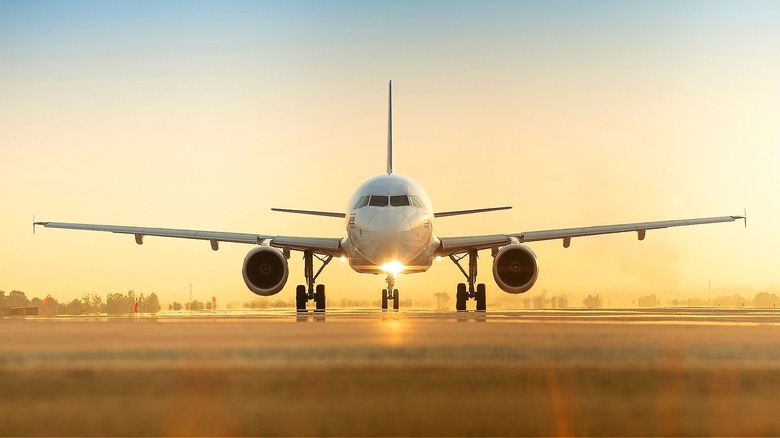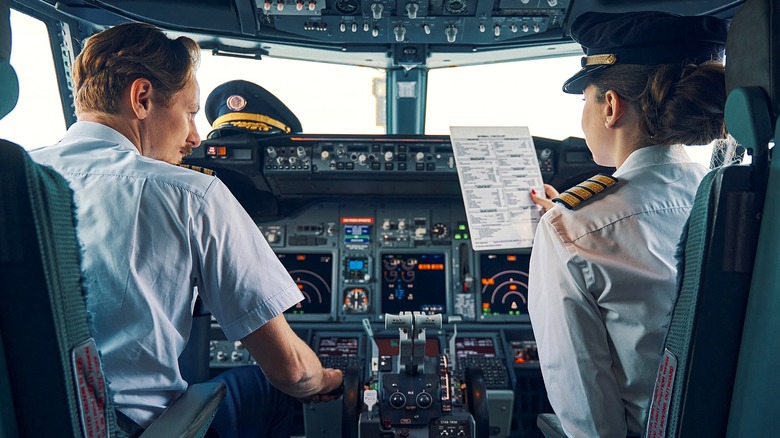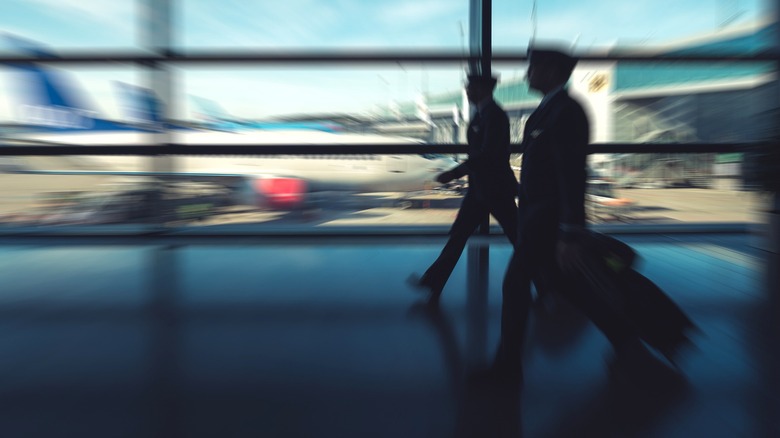How Much Do Airline Pilots Get Paid?
Airline pilot is one of the 20 highest-paying jobs in the United States, according to the Bureau of Labor Statistics. As with the other occupations on the list, airline pilots earn over $200,000 a year, which is roughly 4.57 times more than the median annual wage for total jobs in the country. Airline pilots, not to be confused with commercial pilots (who also earn a relatively high wage), make a median annual wage of $211,790. Per the statistics bureau, earners in the top 10% earn $239,200 while those in the bottom 10% still earn $98,680 a year.
While you'll likely think of passenger planes when you think of airline pilots, the top industry for these skilled aviators is actually the couriers and express delivery services industry. This is followed by scheduled air transportation, which is the regular transport of people, cargo, and property by an airline. For these two industries, wages for airline pilots are above $221,160 a year, while the third- biggest industry for airline pilots, the federal government, sees a drop of nearly 50%, with pilots working for the government earning $116,380 annually.
Note that airline pilots earn a wage, not a salary, as they're paid by the hour. The Bureau of Labor Statistics explains that airline pilots typically work about 225 hours a month, which is further broken down into 75 hours of flight time and 150 hours working on other duties related to their job, like preparing flight plans. That works out to about a 56-hour workweek.
The road to becoming an airline pilot
To become an airline pilot, a person must first earn an airline transport pilot certificate. This is the highest certification issued by the Federal Aviation Administration, and it typically takes a pilot (in the U.S.) two years to log the required 1,500 hours of certified flight time. However, this is only after the individual completes the prerequisites first, which include earning a student pilot certificate, a private pilot certificate, instrument rating, a commercial pilot certificate, and multi-engine rating.
In addition, airline pilots typically hold a bachelor's degree, which they can earn in any field, from business to teaching. This said, a pilot with an aviation degree can reduce their 1,500 hours of flight experience to 1,000. (An associate degree in aviation reduces the requirement by 250 hours.)
ATP-certified pilots don't typically make the jump to a major airline right away. Oftentimes, they work at the regional level first, then move up after gaining more experience (that is, hours flying certain aircraft). For example, for Southwest Airlines (home to the Companion Pass), the preferred flight experience for its pilots is 500 hours in a fixed-wing turbine aircraft and actively flying for two of the last five years. According to ZipRecruiter, regional pilots make $105,645 a year, or $51 an hour. Typically, a pilot will fly regionally for three to six years before applying to a major airline. Once there, an airline pilot's earnings are according to seniority and aircraft.
Career outlook for US pilots
As noted, airline pilots in the U.S. earn nearly $240,000 on the high end and just under $100,000 on the low end. Further, depending on the industry, pilots can earn more or less, while remaining within this range. This being said, wages for airline pilots (as well as advancement opportunities) depend on seniority, which basically means the more time a pilot logs with an airline, the more they will earn.
Once hired at an airline, a pilot will begin as a first officer (copilot). As explained by ATP Flight School, first-year first officers will earn the specified pay for that position and for that amount of experience (as outlined by a collective bargaining agreement). How long before a copilot graduates to captain? There's no set time; while some first officers can become captains within two or three years, it can take others twice as long, or even more than a decade. As they wait, however, they'll continue moving up the seniority ladder.
Further, the Bureau of Labor Statistics doesn't distinguish between captains and copilots when it comes to yearly pay. Rather, BLS groups airline pilots, copilots, and flight engineers together, so the median annual wage of $211,790 applies to all (again, it's based more on seniority). As for the job outlook for airline pilots in the United States, the statistics bureau forecasts growth of 4% over 10 years from 2022 to 2032, with an estimated 16,800 openings each year.


